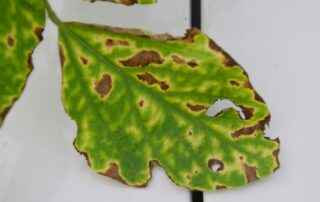Seed treatments for watermolds and fungi that affect soybean in Ohio
This article originally appeared in the C.O.R.N. Newsletter. The original article can be found here. There are some new fungicide seed treatments and an [...]
Disease Management: Host Resistance to Soybean Diseases – The Best Return on Investment
The first and most economical approach (a.k.a. save money) to manage many of the pathogens that impact soybean in the state of Ohio is to [...]
Disease Management: Mid-Season Soybean Diseases – What can we Predict?
This year, there is a very high degree of variability across the state with regards to soybean height, canopy coverage, and overall crop condition. [...]





 and then
and then